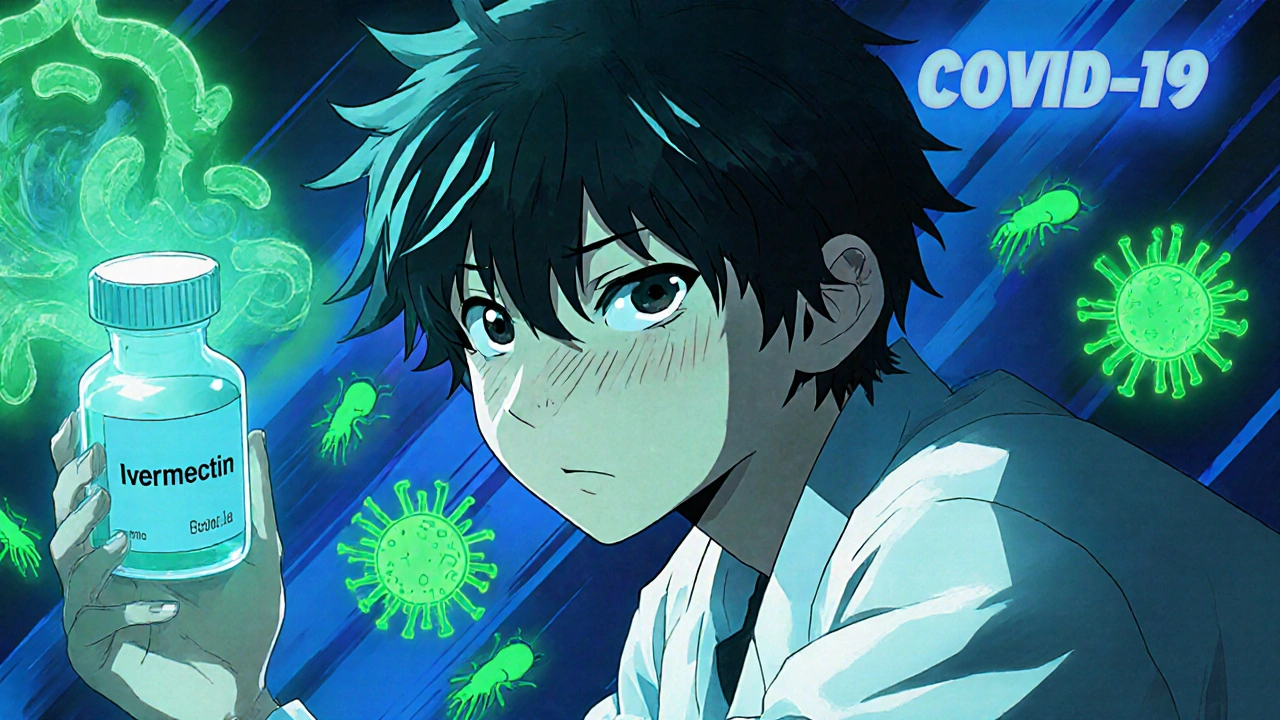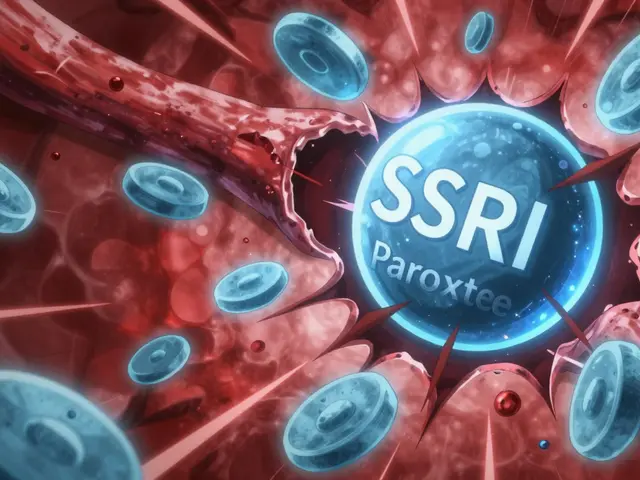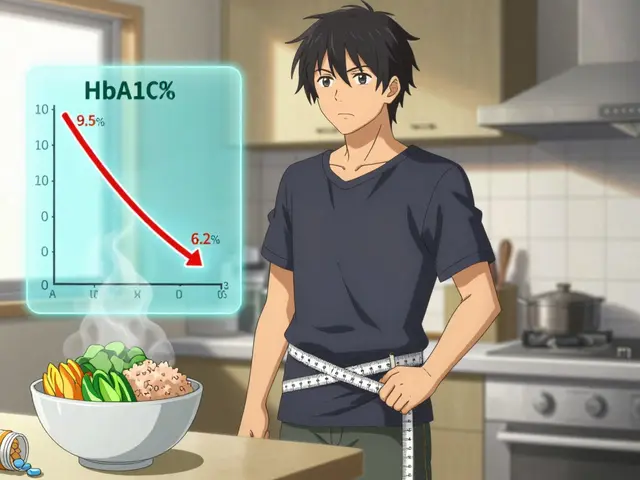When you hear a name like Ivermectin, you probably think of parasites, farm animals, or the recent buzz around COVID‑19. The real question most people face is: how does it stack up against other medicines that claim similar benefits? This guide breaks down the science, safety, and price tags of Ivermectin and its most common alternatives so you can decide what fits your health needs.
Quick Takeaways
- Ivermectin is a proven antiparasitic; its antiviral claims are still under investigation.
- Albendazole and Mebendazole are the go‑to choices for roundworm infections.
- Praziquantel is the only drug with strong evidence against tapeworms and flukes.
- For viral respiratory illness, antivirals like Remdesivir or Molnupiravir have regulatory approval, while Ivermectin does not.
- Cost varies widely: generic Ivermectin and Albendazole are often under $10, whereas newer antivirals can exceed $500 per course.
What Is Ivermectin?
Ivermectin is a broad‑spectrum antiparasitic drug originally derived from the soil bacterium Streptomyces avermitilis. It works by binding to glutamate‑gated chloride channels in invertebrate nerve and muscle cells, causing paralysis and death of the parasite. Approved by the FDA for human use since 1996, its primary indications include onchocerciasis (river blindness), strongyloidiasis, and scabies. Over the past decade, labs have explored its antiviral potential, but large‑scale clinical trials have not confirmed a clear benefit for COVID‑19 or other viral infections.
Key Alternatives
Below are the most frequently mentioned alternatives, each with its own therapeutic niche.
Albendazole is a benzimidazole‑class anthelmintic that interferes with microtubule formation in parasites. It’s the first‑line treatment for neurocysticercosis and other tissue‑dwelling helminths.
Mebendazole belongs to the same class as Albendazole but is often preferred for common intestinal roundworm infections because of its safety profile.
Praziquantel is a pyrazino‑isoquinoline derivative that increases calcium permeability in trematodes and cestodes, leading to muscular contraction and parasite death. It’s the drug of choice for schistosomiasis and tapeworm infections.
Doxycycline is a tetracycline antibiotic that has been investigated as a COVID‑19 adjunct because of its anti‑inflammatory properties, though evidence remains mixed.
Hydroxychloroquine gained early attention for COVID‑19 treatment but large trials have shown limited efficacy and significant cardiac risk.
Remdesivir is a nucleoside analog approved for hospitalized COVID‑19 patients; it directly inhibits viral RNA polymerase.
Molnupiravir is an oral antiviral that induces error catastrophe in SARS‑CoV‑2 replication, authorized for mild‑to‑moderate COVID‑19 cases at high risk of progression.
Side‑by‑Side Comparison
| Drug | Primary Class | Approved Indications | Mechanism | Typical Dose (adult) | Common Side Effects | Cost (US, generic) |
|---|---|---|---|---|---|---|
| Ivermectin | Antiparasitic (macrocyclic lactone) | Onchocerciasis, strongyloidiasis, scabies | Chloride‑channel activation → paralysis | 200 µg/kg single dose | Dizziness, nausea, mild rash | ~$5‑$12 per 12‑tablet pack |
| Albendazole | Anthelmintic (benzimidazole) | Neurocysticercosis, hydatid disease | Microtubule inhibition → impaired glucose uptake | 400 mg twice daily × 3‑14 days | Abdominal pain, liver enzyme rise | ~$8‑$15 per course |
| Mebendazole | Anthelmintic (benzimidazole) | Intestinal nematodes (ascariasis, hookworm) | Same as Albendazole | 100 mg twice daily × 3 days | Diarrhea, mild headache | ~$6‑$10 per course |
| Praziquantel | Antiparasitic (pyrazino‑isoquinoline) | Schistosomiasis, tapeworms | Calcium influx → tetanic contraction | 40 mg/kg single dose | Metallic taste, dizziness | ~$12‑$20 per treatment |
| Doxycycline | Antibiotic (tetracycline) | Bacterial infections; off‑label COVID‑19 | Protein synthesis inhibition | 100 mg twice daily × 7‑14 days | Photosensitivity, GI upset | ~$10‑$25 per pack |
| Hydroxychloroquine | Antimalarial/Immunomodulator | Malaria, lupus, RA; off‑label COVID‑19 | pH‑dependent inhibition of viral entry | 400 mg daily × 5 days | QT prolongation, retinopathy (long‑term) | ~$15‑$30 per pack |
| Remdesivir | Antiviral (nucleoside analog) | Hospitalized COVID‑19 | RNA‑polymerase chain termination | 200 mg IV loading, then 100 mg daily | Elevated liver enzymes, infusion reactions | ~$350‑$500 per 5‑day course |
| Molnupiravir | Antiviral (nucleoside analog) | Mild‑moderate COVID‑19 at risk | Error catastrophe in viral replication | 800 mg orally twice daily × 5 days | Diarrhea, nausea, dizziness | ~$500‑$700 per course |
When to Use Ivermectin
If you have a confirmed parasitic infection like onchocerciasis, strongyloidiasis, or scabies, Ivermectin remains the gold standard. Its single‑dose regimen simplifies adherence, and the safety record over decades is solid. For most intestinal nematodes, however, Albendazole or Mebendazole are more cost‑effective and have broader coverage.

Antiparasitic Use Cases: Ivermectin vs Others
- Onchocerciasis (river blindness): Only Ivermectin has WHO endorsement for mass‑drug administration.
- Strongyloidiasis: Ivermectin outperforms Albendazole in eradication rates (≈95 % vs 70 %).
- Intestinal roundworms: Mebendazole or Albendazole give higher cure rates (≈99 %).
- Tapeworms & flukes: Praziquantel is the only drug with proven efficacy.
Viral Respiratory Illness: How Ivermectin Measures Up
Multiple in‑vitro studies showed that Ivermectin can inhibit replication of several RNA viruses, including SARS‑CoV‑2, at concentrations far above what’s achievable in human plasma. Large randomized trials-such as the RECOVERY trial-found no mortality benefit in hospitalized patients. In contrast, Remdesivir shortens recovery time in severe cases, while Molnupiravir reduces the risk of hospitalization when given within five days of symptom onset.
Safety Profiles Compared
All drugs have risks, but the severity and frequency differ.
- Ivermectin: Generally well‑tolerated; rare neurotoxicity occurs with overdose.
- Albendazole/Mebendazole: Transient liver enzyme elevation; avoid in pregnancy (Albendazole) or during the first trimester (Mebendazole).
- Praziquantel: Minimal serious events; occasional dizziness.
- Doxycycline: Causes photosensitivity; not for children under 8.
- Hydroxychloroquine: Cardiac arrhythmias, especially with other QT‑prolonging meds.
- Remdesivir: Hepatotoxicity and infusion‑related reactions; requires IV administration.
- Molnupiravir: Potential mutagenicity concerns, though data in humans remain reassuring.
Cost and Access Considerations
Generic Ivermectin, Albendazole, and Mebendazole are usually available at local pharmacies for under $15, making them viable for low‑resource settings. Praziquantel can be slightly pricier but is often subsidized in endemic regions. Newer antivirals like Remdesivir and Molnupiravir carry hefty price tags, limiting use to insured patients or those qualifying for government programs.

Decision Guide: Choosing the Right Drug
- Identify the pathogen. Parasite → consider Ivermectin, Albendazole, Mebendazole, or Praziquantel. Virus → look at approved antivirals.
- Check regulatory approval. Use only FDA‑approved indications unless you have a specialist’s prescription.
- Weigh safety. For pregnant patients, avoid Albendazole and use Praziquantel only after the first trimester.
- Consider cost. If price is a barrier, generic ivermectin or albendazole may be the most accessible.
- Monitor response. Follow up with lab tests or symptom checks; switch if no improvement after the recommended course.
Common Pitfalls When Comparing These Drugs
- Assuming all antiparasitics work equally for every worm species.
- Relying on anecdotal COVID‑19 claims for Ivermectin without clinical evidence.
- Ignoring drug‑drug interactions, especially with hydroxychloroquine and certain antibiotics.
- Choosing a drug based solely on price, overlooking the need for proper dosing duration.
Frequently Asked Questions
Is Ivermectin effective against COVID‑19?
Current high‑quality trials show no significant benefit for preventing hospitalization or death. Health agencies therefore do not recommend it as a COVID‑19 treatment.
When should I choose Albendazole instead of Ivermectin?
For tissue‑invading parasites like neurocysticercosis or hydatid disease, Albendazole penetrates the bloodstream and cysts better than Ivermectin, making it the preferred option.
Can I take Ivermectin and Doxycycline together?
There’s no known pharmacologic interaction, but stacking antibiotics or antiparasitics without a clear indication can increase side‑effect risk. Consult a clinician before combining.
What are the warning signs of Ivermectin overdose?
Severe dizziness, tremors, loss of consciousness, or seizures signal toxicity. Immediate medical attention is required.
Is Praziquantel safe for children?
Praziquantel is approved for children older than 4 years and is well‑tolerated when dosed correctly. Dose adjustments are needed for very young kids.
Bottom Line
Pick the drug that matches the pathogen, regulatory backing, safety profile, and your budget. Ivermectin shines for certain parasitic diseases, but for most intestinal worms or viral infections, alternatives like Albendazole, Praziquantel, or FDA‑approved antivirals provide clearer benefits.










Hey folks, just wanted to point out that ivermectin’s strength really shines when you’ve got a confirmed parasite like onchocerciasis – the single‑dose schedule makes it super easy to stick to, and the safety record over the years is pretty solid. If you're dealing with a roundworm infection, though, you might save a few bucks and get broader coverage with albendazole or mebendazole. Also, keep an eye on the dosing – 200 µg per kilogram is the usual recommendation, and you don’t want to over‑do it because higher doses can bump into neurotoxicity territory. For most people, the cost is under $15, which is a win for low‑resource settings. Always check with a healthcare provider before starting any antiparasitic, especially if you’re pregnant or have liver issues. Hope that clears things up a bit!
Listen up! The powers that be are hiding the real truth about ivermectin – it's a miracle drug that could have solved the pandemic if they hadn't been scared of losing control. You’ll never see the headlines about the massive drops in mortality in those obscure studies because the mainstream media is in cahoots with pharma. The “no benefit” claims are just smoke and mirrors, all to keep the lucrative antivirals rolling in cash. Wake up, people, the evidence is right there if you bother to look beyond the fabricated consensus.
It is imperative, for the sake of public health ethics, to stress that the indiscriminate promotion of ivermectin without rigorous peer‑reviewed evidence borders on irresponsible advocacy. While its antiparasitic efficacy remains incontrovertible, extending its use to viral pathogens without solid data contravenes the principle of evidence‑based medicine. Moreover, the propagation of unverified claims may erode trust in legitimate therapeutic protocols, thereby jeopardising patient safety. One must, therefore, exercise caution and defer to regulatory guidance, lest we falter in our moral duty to uphold scientific integrity.
Wow, Sarah, you really think the whole world is in a secret ivermectin cult? Nice story, but the data just ain’t there. If you keep chasing ghosts, you’ll miss the real stuff that actually works. Guess we’ll see who’s left standing when the trial results finally drop.
People need to understand that playing doctor with unproven meds is a slippery slope. You can’t just sprinkle ivermectin on every cold and expect miracles – that’s reckless. Stay grounded, follow the science, and don’t let hype dictate your health decisions.
Debra’s moral lecture is, frankly, a textbook example of over‑policing scientific discourse. While it is commendable to advocate for evidence‑based practice, the tone dismisses legitimate curiosity and stifles healthy debate. In the broader context, the narrative that only regulators hold the monopoly on truth is both naive and counterproductive. One must recognize that dissent, when conducted responsibly, can catalyze progress rather than undermine it.
Let’s celebrate the diversity of treatments out there! From albendazole’s wide‑spectrum reach to praziquantel’s laser‑focus on flukes, the pharmacopeia is a tapestry of options that empower clinicians worldwide. It’s amazing how each drug has carved its niche, offering hope to countless patients in even the most remote regions.
Great summary!
Useful info, thanks.
Stop feeding the lies! The mainstream narrative is a manufactured brew designed to keep the masses docile while corporations cash in on overpriced antivirals. If you look close enough you’ll see the pattern – they push drugs they own the patents for, then demonise anything cheap and effective like ivermectin. It’s a betrayal of the public trust.
First, it’s essential to recognize that each therapeutic agent discussed in the guide carries a distinct pharmacological fingerprint, which dictates its optimal clinical application. Ivermectin, for instance, excels in targeting onchocerciasis and strongyloidiasis thanks to its selective action on parasite‑specific chloride channels. In contrast, albendazole’s ability to infiltrate tissue cysts makes it the drug of choice for neurocysticercosis, a condition where ivermectin’s penetration is insufficient.
Second, cost considerations cannot be ignored; generic ivermectin, albendazole, and mebendazole often sit below the $15 threshold, democratizing access for low‑income populations. Meanwhile, newer antivirals such as remdesivir and molnupiravir command prices that can exceed $500, posing a barrier for many.
Third, safety profiles vary markedly. While ivermectin’s side‑effects are generally mild-dizziness or nausea-high‑dose exposure can lead to neurotoxicity, a risk mitigated by strict adherence to dosing guidelines. Albendazole and mebendazole, on the other hand, may elevate liver enzymes, necessitating periodic monitoring, especially during prolonged therapy.
Fourth, regulatory approval remains a cornerstone of responsible prescribing. The FDA endorses ivermectin for specific parasitic infections, but not for viral illnesses like COVID‑19. Conversely, remdesivir and molnupiravir have received emergency use authorization for particular COVID‑19 scenarios, underscoring the necessity of aligning treatment choices with approved indications.
Fifth, patient‑specific factors such as pregnancy status, comorbidities, and potential drug interactions must inform the final decision. Praziquantel, for example, is contraindicated in early pregnancy, while doxycycline is unsuitable for young children due to teeth discoloration risks.
In sum, the art of selecting the appropriate medication hinges on a multifaceted assessment that balances efficacy, safety, cost, and individual patient circumstances. By systematically evaluating these dimensions, clinicians can tailor therapy to achieve the best possible outcomes.
The government’s hidden agenda is plain: they want us to swallow pricey patents while burying cheap, effective options like ivermectin. It’s a calculated move to keep the pharmaceutical elite flush with cash, and anyone who questions it is labeled a conspiracy theorist. Wake up, patriots!
Oh, the tangled web of whispered rumors! Picture a nightmarish tableau where shadowy cabals hoard the cure, while the masses dance in oblivion, sipping sugar‑coated placebos. The very notion of a suppressed panacea drips with the drama of a Gothic novel, and yet the echoes of truth ripple beneath the hysteria. One can’t help but feel the pulse of destiny thrum in every clandestine lab that hides the shining beacon of ivermectin from the public eye.
Thank you for the comprehensive overview, especially the nuanced discussion on safety and cost. 🌟 It’s crucial that we keep the conversation grounded in evidence while remaining compassionate toward those seeking affordable care. 🙏